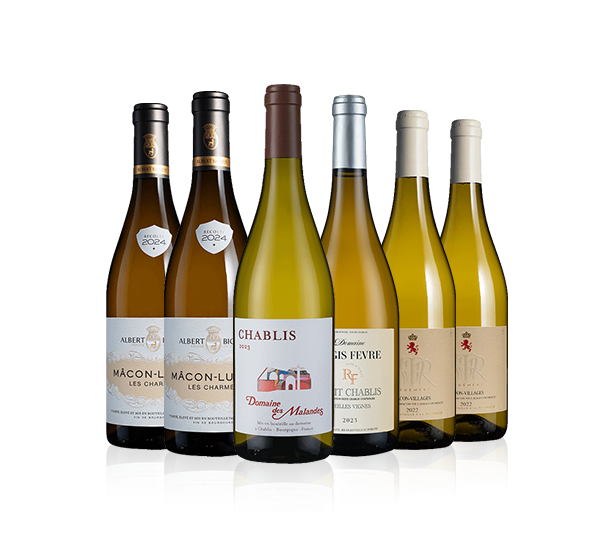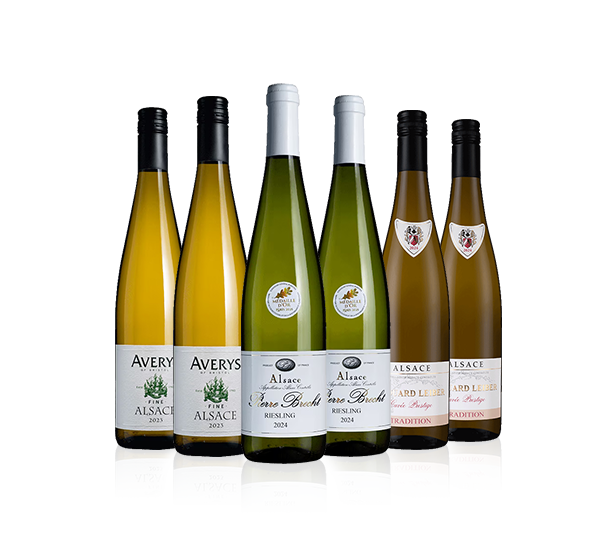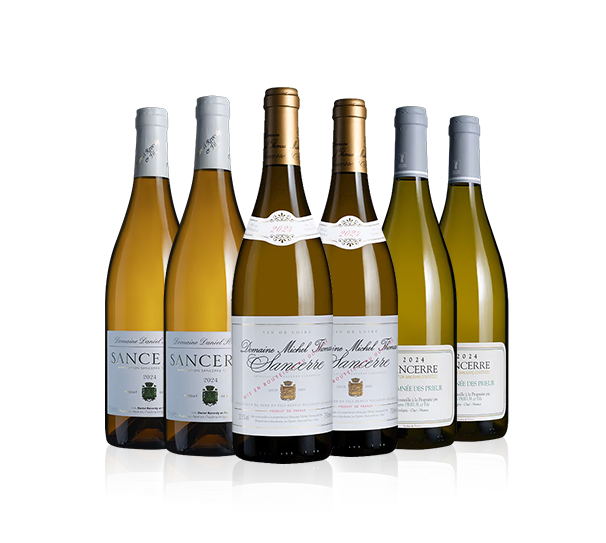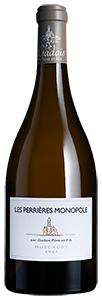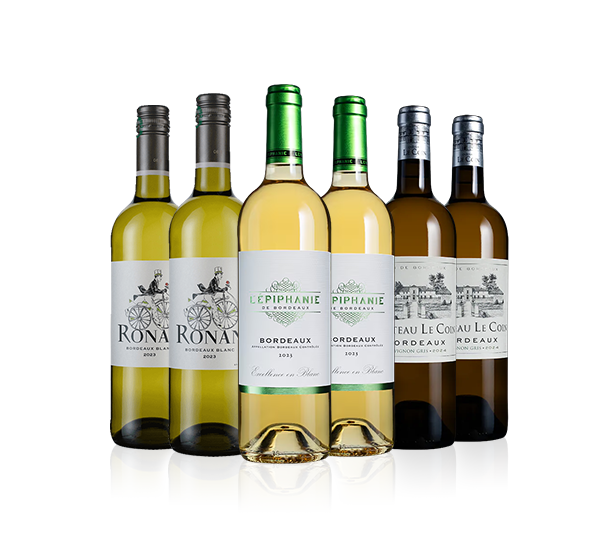Filter by
- £104.94 per caseSAVE £12.01
- £65.94 per caseSAVE £17.00
- £13.99 per bottleSAVE £2.00
- Fine 1er Cru Chablis from the historic Servin family and a top vintage. Finesse, delicacy and lengthfrom £25.00 per bottle
- Exceptional crisp, citrusy white from a top Chenin specialist and its finest Loire appellation£16.99 per bottleSAVE £3.00
- Superb, off-dry, aromatic and beautifully balanced Grand Cru Gewurz from a top Alsace estate£31.00 per bottle
- Rich Bordeaux white crafted like a serious Graves with an oaky wrap to the intense citrus fruit£15.99 per bottle
- Seductive, pure Viognier that pays homage to a saviour of this great grape£12.99 per bottle
- A delicious fresh 9% white from SW France using the Gaillac grape, with a peck of petillance£11.99 per bottle
- from £25.00 per bottle
- £10.99 per bottleSAVE £2.00
- Fine old-vine Chablis from the historic Servin family, a top vintage and a former 1er Cru vineyardfrom £22.00 per bottle
- from £25.00 per bottle
- Only made in tiny quantities, these classic Sancerres all come from small, family estates£126.00 per caseSAVE £8.00
- Elegant with ripe stone fruit, a charming white Burgundy from a fifth-generation family estatefrom £22.00 per bottle
- Superb, new zesty-lemon, barrel-fermented Vermentino handcrafted in the Languedoc£11.99 per bottleSAVE £2.00
- Fine, mineral-fresh Chablis from Samuel Billaud, regarded as one of Chablis's leading winemakersfrom £32.00 per bottle
- Superbly balanced white Burgundy from a renowned domaine whose top Grands Crus fetch £200 a bottlefrom £28.00 per bottle
- Elegant, flinty Sancerre from one of the region's smallest producers and its fine Silex soils£23.00 per bottleSAVE £1.00
- Superb, single vineyard Muscadet from a fine family estate, part fermented in oak and long lees aged£18.99 per bottleSAVE £2.01
- Intensely focused Chablis of rare maturity with a classic mineral streak, from a fine Premier Cru£39.00 per bottle
- from £28.00 per bottle
- La Clarière's superb, oak-fermented, estate white – grassy citrusy freshness with gentle spice£23.00 per bottle
- £83.94 per caseSAVE £30.02
Wine FAQs
What are the most famous french white wines?
French white wine is made in several renowned regions across France, each one contributing to its unique character, style and flavour to the wine. Within each region, there are numerous appellations celebrated for their exceptional white wines.
Here are some of the most famous ones:
Chablis - A sub-region of Burgundy, Chablis is known for its lean, zesty, minerally driven white wines. Chablis wines traditionally see little or no oak ageing, preserving the pure, fresh fruit characteristics of the grape with a tingly finish and flint-like minerality.
Sauternes - These wines are remarkably rich, sweet and complex, with intense flavours of honey, apricot and marmalade. This is balanced by a vibrant acidity that prevents them from being cloying.
Alsace - Situated on France’s eastern border, Alsace is known for its aromatic white varieties, including Gewürztraminer, Pinot Gris and Riesling.
Sancerre - These wines are typically dry, high in acidity and characterised by their intense aromatics. They deliver citrus and green fruit flavours and often a distinctive flinty, smoky note, particularly in Pouilly-Fumé.
Vouvray - Celebrated for its Chenin Blanc wines, ranging from dry to sweet and sparkling.
How should I serve French white wine?
French white wines should be served chilled to bring out their best characteristics.
Light, aromatic wines such as Sauvignon Blanc or Muscadet should be served between 9-11°C. Richer, full-bodied whites like oak-aged Chardonnay or Viognier taste best slightly warmer, usually between 10-13°C. Be careful not to serve white wines excessively cold, as this might mute the aromas and flavours.
Decanting can be useful for aged white wines, allowing them to breathe and release their complex aromas.
For the best tasting experience, serve French white wine in a glass specifically designed for white wines. These glasses typically have a narrower bowl and a rim that tapers inwards to concentrate the aromas of the wine. Hold the glass by the stem to prevent your hand’s warmth from affecting the temperature of the wine.
When can I expect my wine delivery?
The day of your delivery will depend on which option you’ve chosen at checkout.
- For a standard delivery, we will deliver your order within three working days. Delivery to the Scottish Highlands, some other areas of Scotland, Northern Ireland and offshore islands can take an extra few days.
- Usual delivery times are between 07.00 and 21.00.
- You can select Next-day or Named-day delivery at checkout – but do bear in mind we don’t deliver on Sundays or Bank Holidays.
For the best experience we recommend you subscribe to our Unlimited service. A one-off payment of £29.99 entitles you to free delivery for a year – including free Next-day delivery. There’s no minimum order – you’ll get free delivery even on a single bottle. And you can get delivery to multiple addresses, so it’s perfect for gifting!
Do you have a money-back guarantee?
We want you to be entirely happy with your chosen wine, so we offer an unbeatable money-back guarantee on every single bottle – even wines you buy on sale.
No quibbles. No questions. Just your 100% satisfaction.
If you aren't happy for any reason, get in touch and we’ll arrange to collect your bottle within 48 hours.
Can I get a wine subscription?
100,000 customers already love our wine subscriptions, and enjoy lower prices on their favourites all year round.
With a Laithwaites wine subscription, you can tell us what kind of wine you prefer, and how many bottles you’d like to receive on each delivery.
You can then choose how often you’d like to receive your case – every four or eight weeks. And delivery is free too!


